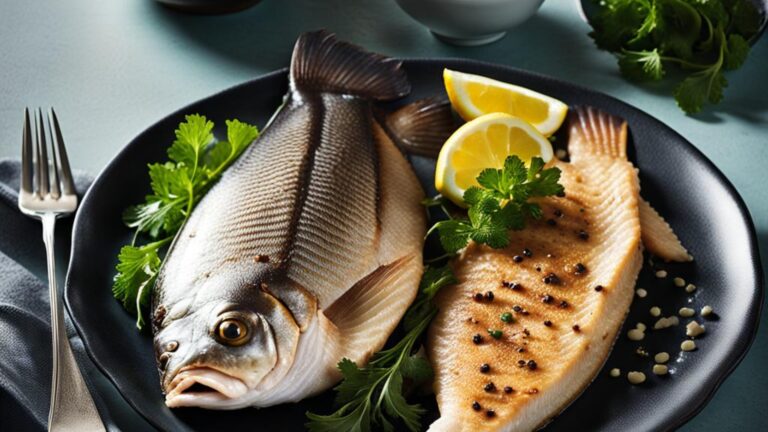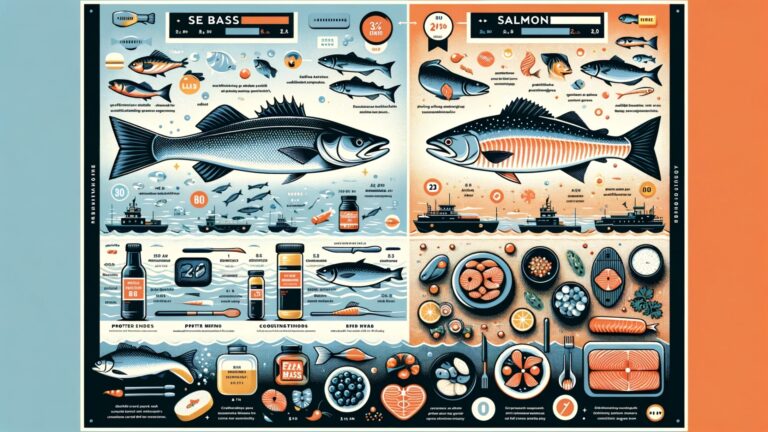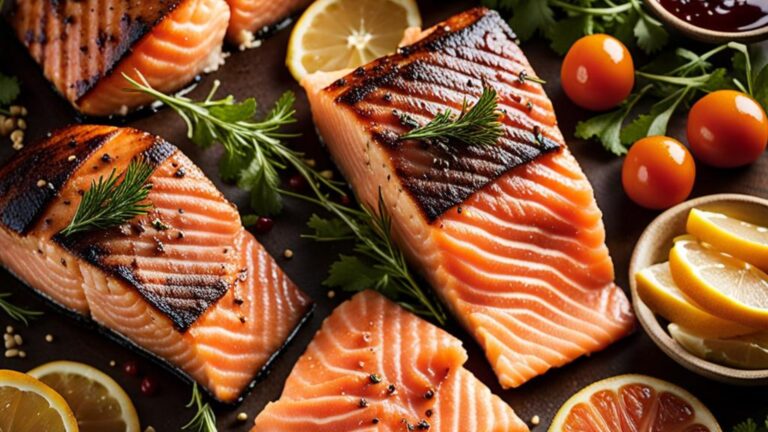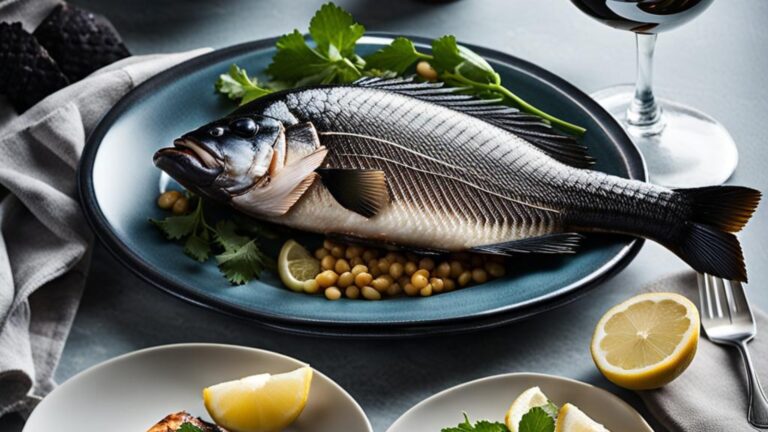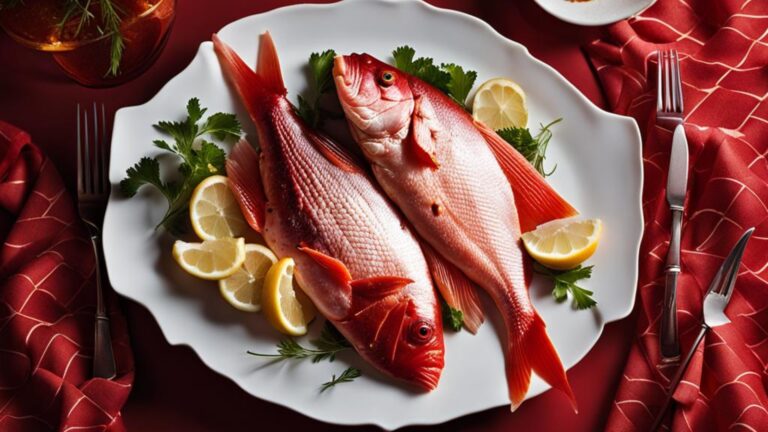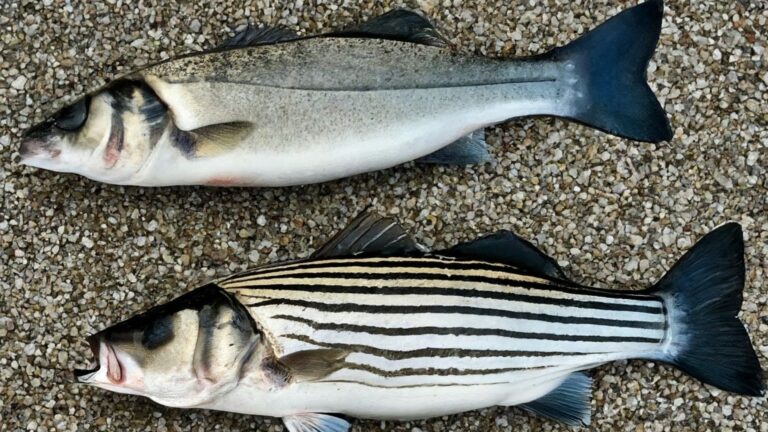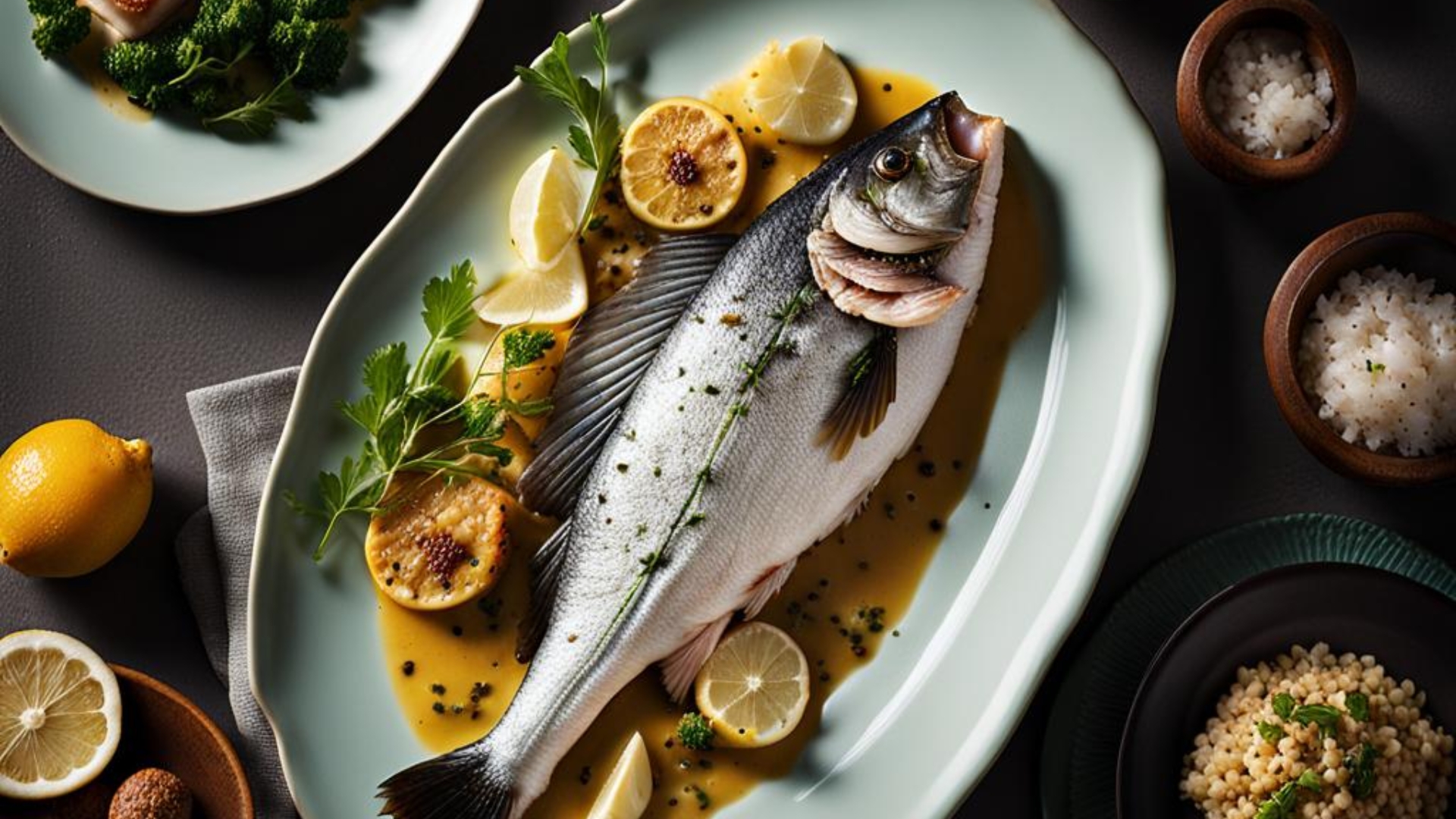
Sea bass is a high-quality, diverse marine fish known for their mild flavor and firm texture.
Basa, called Pangasius, is a freshwater fish commonly farmed in Southeast Asia. These are not the only differences between Sea Bass and Basa; there are more.
Here I am again and would like to discuss human food’s differences, similarities, tastes, nutritional facts, and many more. Finally, I will let you decide which fish is better for you.
After several discussions of Sea Bass and other fishes, let’s compare Sea Bass vs Basa. It has been delightful to write about these fish, and let’s start without any delay.
An Overview
There are so many differences between Sea Bass and Basa. But before I take you into a deep discussion, I assure you that having a general idea of the two fishes will help you understand them better.
The table has been made from research from different forums and public opinion.
| Characteristic | Sea Bass | Basa |
| Family | Serranidae | Pangasiidae |
| Native Regions | Eastern Atlantic Ocean, from southern Norway to Senegal | Mekong and Chao Phraya basins in Mainland Southeast Asia |
| Size (Weight and Length) | 2-9 Pound and 20-26 inches | 9-500 pounds and 1-6 feet |
| Body Shape | large head and mouth, tight scales, elongated body shape | small scales, large mouth, straight-edged or rounded tail |
| Coloration (Color) | Diverse color: black, dusky brown, or pale green | White to off-white |
| Diet | Consume everything smaller than it | Omnivorous: consume plankton, aquatic plants, and small invertebrates |
| As a Food | mildly sweet flavor | Excellent source of high-quality protein |
| Grilled sea bass ceviche, miso-glazed sea bass | Mild taste and flaky, firm texture | |
| Popular Species | European seabass | N/A |
| Chilean sea bass | N/A | |
| Aquarium Friendly | Yes | No |
| Lifespan | Up to 25 years | Up to 20 years |
Sea Bass vs Basa: Detailed Differences
Now that we’ve dipped our toes into the Sea Bass and Basa oceans let’s dive deeper to explore the intricacies that set these two fish apart.
From their origins to their culinary characteristics, the distinctions are as diverse as the waters they inhabit.
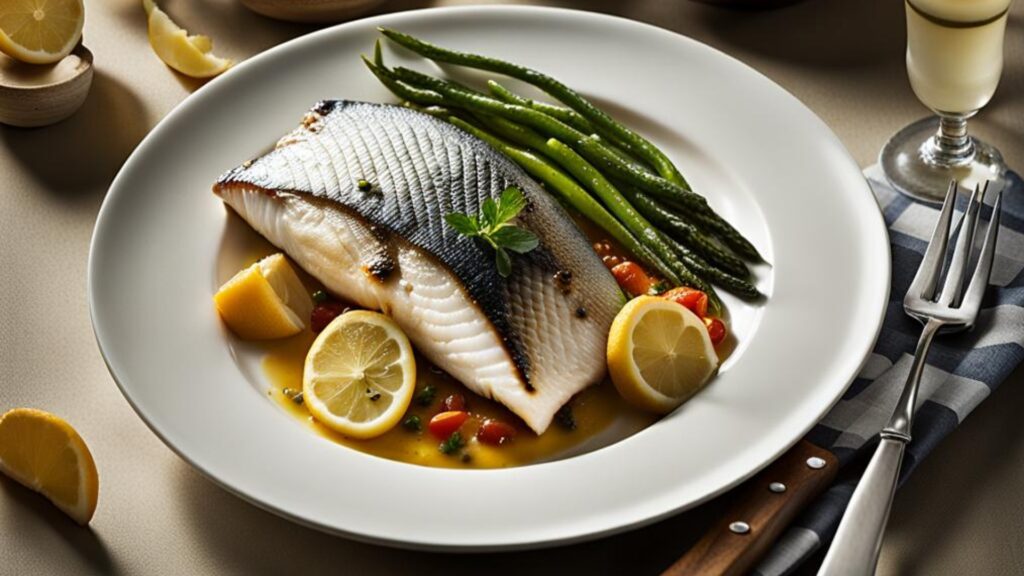
Family and Native Regions
Sea Bass, belonging to the Serranidae family, holds court in the Eastern Atlantic Ocean, spanning from the charming southern shores of Norway to the sun-kissed coastline of Senegal.
On the other hand, Basa, a member of the Pangasiidae family, finds its aquatic haven in the Mekong and Chao Phraya basins of Mainland Southeast Asia. It is a tale of two families with distinct lineage and geographical preferences.
Size Matters
Sea Bass showcases a moderate stature, weighing 2 to 9 pounds and stretching to an elegant 20 to 26 inches. Meanwhile, Basa takes size to the next level, boasting a range of 9 to a jaw-dropping 500 pounds, with lengths spanning from 1 to 6 feet.
Body Aesthetics
Regarding physical appearance, Sea Bass flaunts a notable combination of features – a grandiose head and mouth complemented by tight scales and a sleek, elongated body shape.
In contrast, Basa boasts its unique charm with small scales, a generous mouth, and a tail that can either be straight-edged or rounded, all contributing to its distinct allure.
Color Palette
Sea Bass parades a chromatic marvel, with colors ranging from the enigmatic black to the dusky brown, occasionally punctuated by shades of pale green.
In contrast, Basa’s coloration sticks to the elegant end of the spectrum, showcasing a serene white to the off-white palette that hints at its inherent purity.
Culinary Tidings
As a delectable offering on the gastronomic stage, sea bass arrives with a mildly sweet flavor profile, enchanting the taste buds of connoisseurs worldwide.
Renowned for being an excellent source of high-quality protein, it gracefully lends itself to culinary artistry, featuring dishes such as grilled sea bass, sea bass ceviche, and the delectable miso-glazed sea bass.
With its mild taste and flaky yet firm texture, Basa opens doors to its culinary repertoire, promising a delightful experience on the plate.
Popular Species
European seabass and Chilean sea bass shine as the celebrated species within the Sea Bass realm.
It’s a solo act in the Basa corner, with no subordinates to share the spotlight. It is a dichotomy of popularity, with Sea Bass showing its diverse cast and Basa standing tall as a solo sensation.
Aquarium Compatibility
Sea Bass steps forward as an amiable roommate for those seeking aquatic companionship, embracing life within aquarium walls.
However, Basa declines the invitation, preferring to dwell in the vast waters of natural habitats. It is a tale of sociability versus the call of the wild.
Lifespan Saga
In the grand narrative of life, Sea Bass graces the scene with a potential lifespan of up to 25 years, crafting stories across generations.
Basa, though not far behind, makes its mark with a lifespan of up to 20 years, weaving tales of its own in the aquatic tapestry.
Sea Bass vs. Basa: As a Food
Prepare your taste buds for a delectable journey through the palatable landscapes of Sea Bass and Basa. These fish, though distinct, share a typical stage on the culinary platform.
Sea Bass takes the spotlight as a culinary virtuoso with a delicately sweet flavor. Its firm yet succulent texture lends to various culinary creations, from the grill sizzle to the finesse of sea bass ceviche.
A protein powerhouse, it emerges as an excellent source of high-quality nourishment, satisfying your taste cravings and nutritional needs.
On the other side, Basa presents its gastronomic tale. Basa plays a versatile role in the kitchen, displaying a mild taste and a flaky, firm texture. Its canvas is blanketed with possibilities.
Nutritional Differences Between These Two
Sea Bass and Basa each carve out distinct identities in the nutritional arena. A 3-ounce (85g) portion of Sea Bass introduces 124 calories, accompanied by 20.6g of protein and 4g of total fat.
In contrast, Basa holds its ground with 160 calories, a hearty 22.5g protein, and 7g total fat.
Sea Bass claims a leaner stance in saturated fat at 0.7g, while Basa maintains 2g. Cholesterol content diverges, as Sea Bass registers 53 mg and Basa marks 73mg.
The sodium story follows suit, with Sea Bass at 76.5mg and Basa at 48mg. While Sea Bass veils its iron content, Basa reveals 0.4mg.
As for Vitamin B12, Basa shines bright with 1.1mcg, while Sea Bass offers 0.3mcg. In this nutritional voyage, Sea Bass and Basa unfurl a tapestry of differences, inviting discerning palates to embark on a journey of flavor and nourishment.
Nutritional Table
| Nutrient | Sea Bass | Basa |
| Calories | 124 | 160 |
| Protein | 20.6g | 22.5 g |
| Total Fat | 4g | 7 g |
| Saturated Fat | 0.7 g | 2 g |
| Cholesterol | 53 mg | 73 mg |
| Sodium | 76.5mg | 48 mg |
| Iron | Not specified | 0.4mg |
| Vitamin B12 | 0.3 mcg | 1.1 mcg |
Similarities Between Sea Bass and Basa
Amidst their culinary disparities, Sea Bass and Basa share subtle parallels. After checking on different aspects thoroughly, I have prepared the following list of similarities between the two fishes:
- Sea Bass and Basa are abundant reservoirs of high-quality protein, contributing to a balanced nutritional intake.
- With their firm yet flaky textures, both varieties offer a versatile culinary canvas.
- Sea Bass and Basa share the ability to integrate seamlessly into diverse recipes.
- Despite their distinct origins, both fish capture the essence of oceanic freshness.
- Both fish evoke a shared admiration for the sea’s bounty, embodying the essence of aquatic wonder.
Conclusion
I am torn between their distinct charms in the symphony of flavors that Sea Bass and Basa offer. With its delicate sweetness and firm texture, Sea Bass beckons as a refined choice, while Basa’s adaptability and flaky tenderness tug at my palate.
As I stand at the crossroads of preference, I’m reminded that culinary decisions aren’t merely about taste. They’re a reflection of your nutritional aspirations and gastronomic explorations.
In this tête-à-tête between Sea Bass and Basa, I realize that both fish enrich my culinary repertoire, reminding me that every dish is a harmonious blend of taste, health, and the artistry of the ocean.

